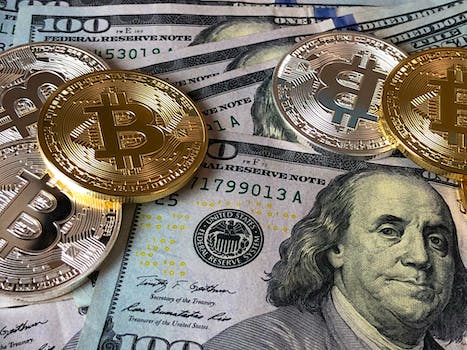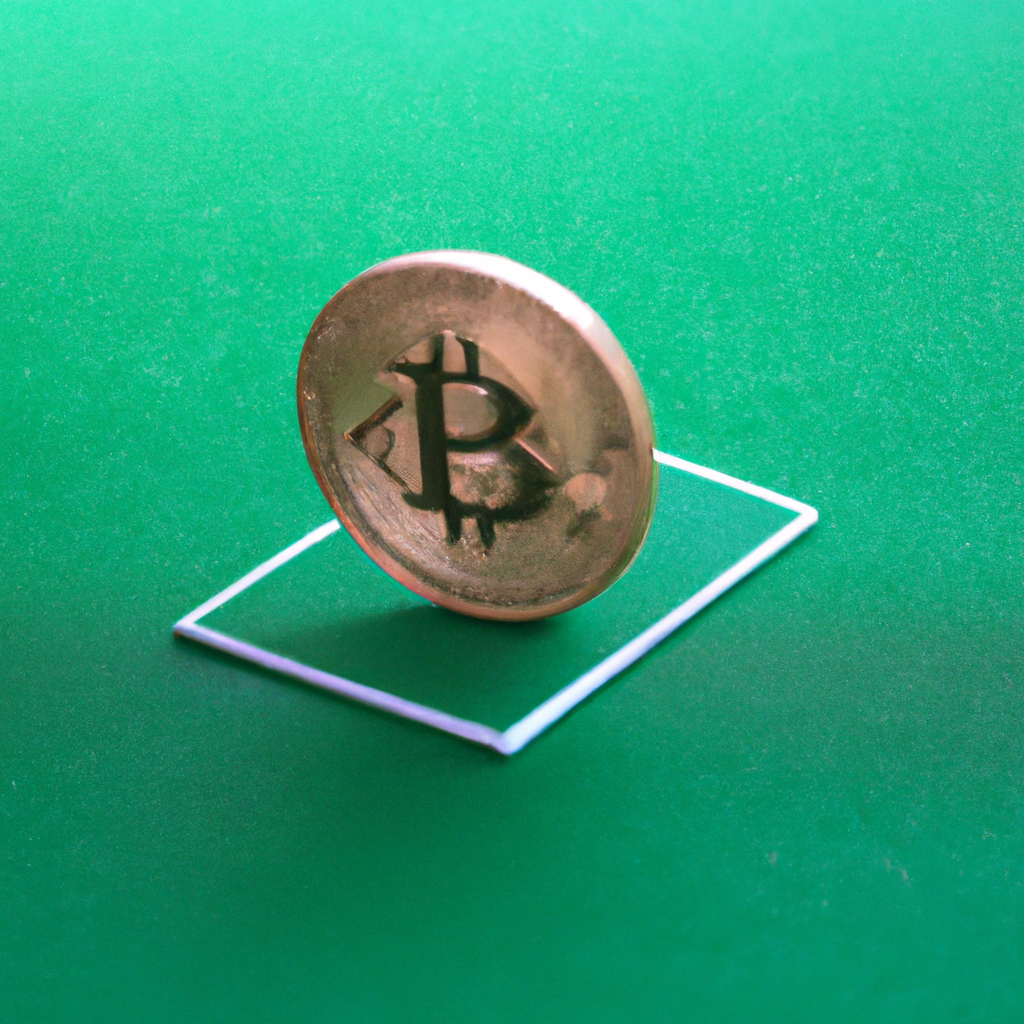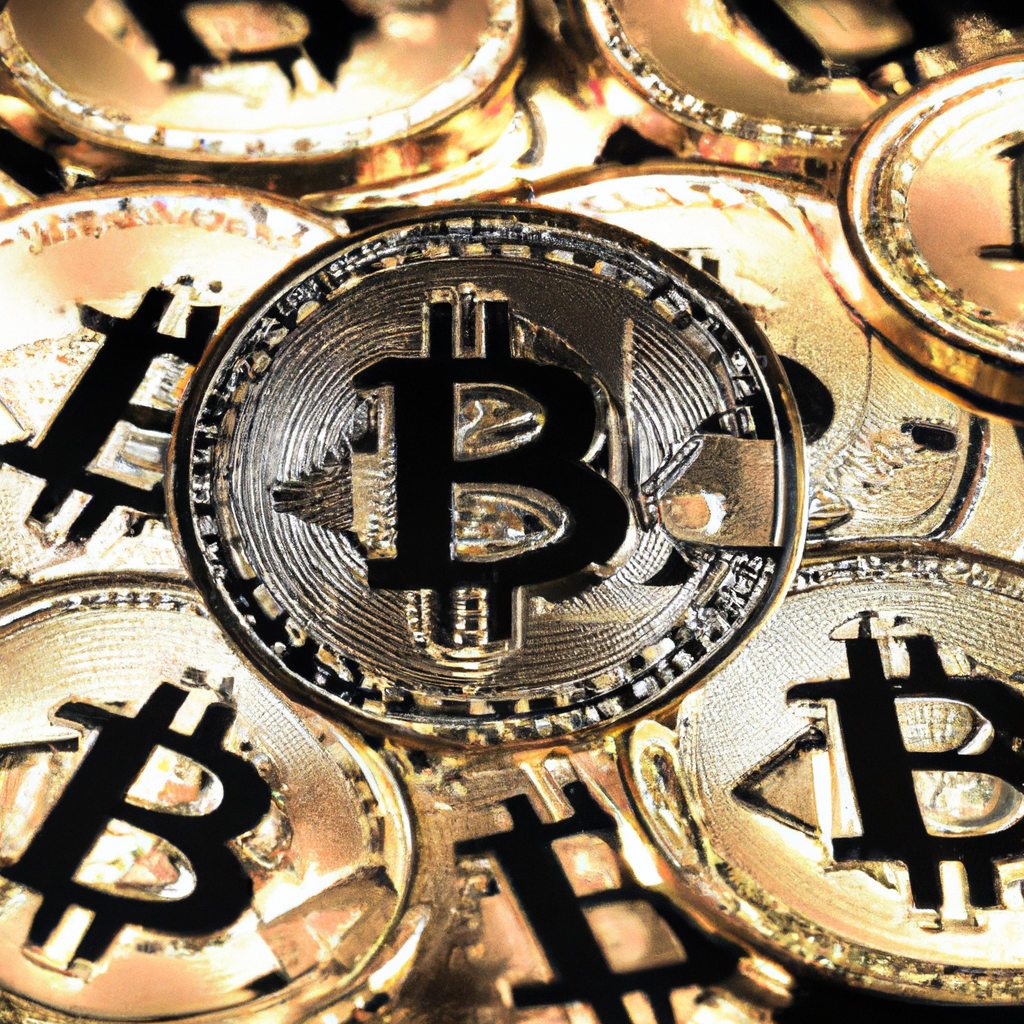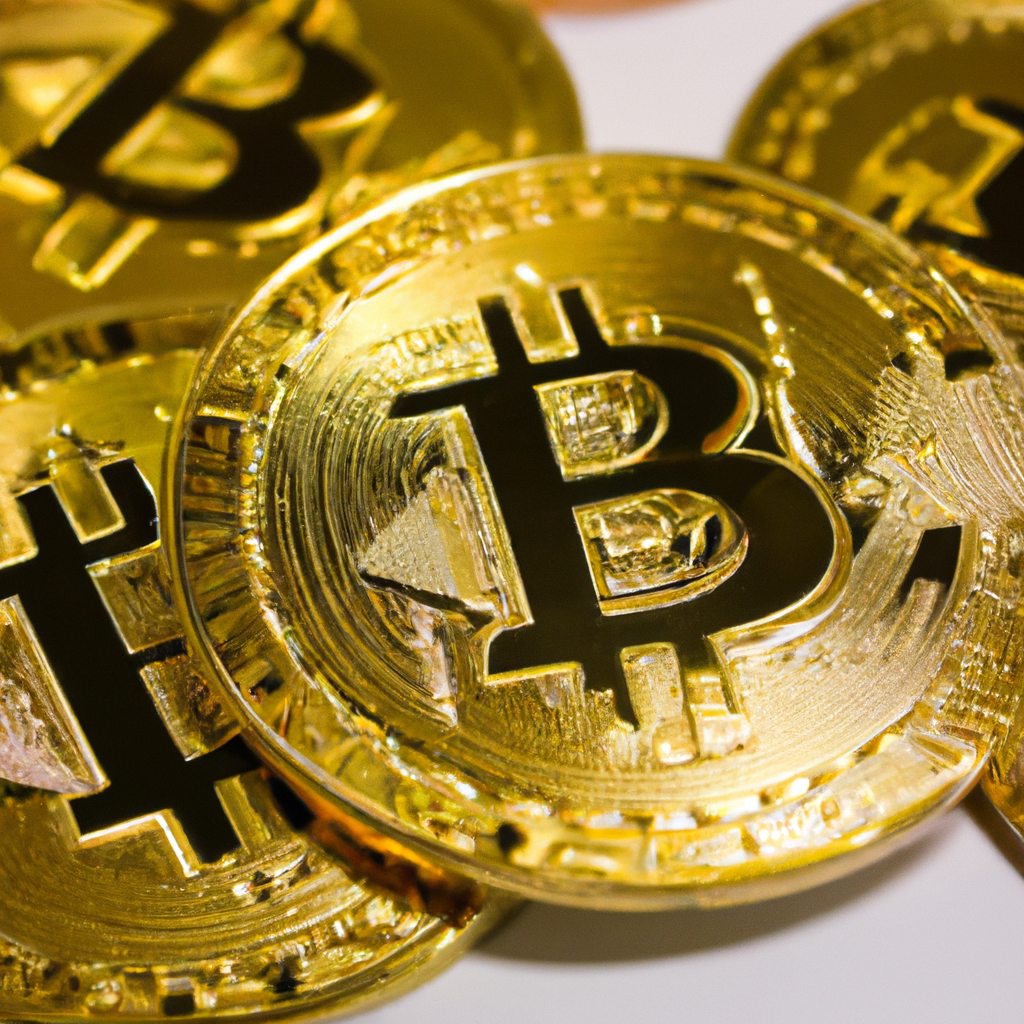In the world of cryptocurrencies, Bitcoin has long been regarded as the most valuable and widely recognized digital currency. However, there are other cryptocurrencies that have gained significant attention and have also reached staggering levels of value. This article will explore one such cryptocurrency that has emerged as the most expensive after Bitcoin, showcasing its unique features and the factors contributing to its skyrocketing price.
- 1. Introduction
- 1.1. Overview of cryptocurrency market
- 1.2. Significance of Bitcoin as the first cryptocurrency
- 1.3. Growing interest in alternative cryptocurrencies
- 2. Criteria for determining the most expensive cryptocurrency
- 2.1. Market capitalization
- 2.2. Price per coin
- 2.3. Trading volume
- 2.4. Unique features and technology
- 2.5. Investor sentiment
- 3. Top contenders for the title of most expensive cryptocurrency
- 3.1. Ethereum (ETH)
- 3.2. Binance Coin (BNB)
- 3.3. Cardano (ADA)
- 3.4. XRP (Ripple)
- 3.5. Dogecoin (DOGE)
1. Introduction
Cryptocurrencies have gained immense popularity in recent years, with Bitcoin leading the pack as the most well-known and valuable digital currency. However, there are other cryptocurrencies that have risen in value and are considered to be extremely expensive. In this article, we will explore the most expensive cryptocurrency after Bitcoin and delve into its features, potential benefits, and risks. By understanding the dynamics of these valuable digital assets, investors can make informed decisions and potentially reap substantial profits.
1.1. Overview of cryptocurrency market
The cryptocurrency market has been rapidly growing and evolving since the introduction of Bitcoin in 2009. Cryptocurrencies are digital or virtual currencies that use cryptography for secure financial transactions, control the creation of additional units, and verify the transfer of assets. They operate on decentralized networks called blockchains, which provide transparency, immutability, and security.
Bitcoin, being the first cryptocurrency, is undoubtedly the most well-known and valuable one. However, there are several other cryptocurrencies that have gained significant popularity and value in recent times.
In this article, we will explore one such cryptocurrency that has become one of the most expensive after Bitcoin. Its rise in value and potential for future growth have attracted the attention of investors and enthusiasts alike.
1.2. Significance of Bitcoin as the first cryptocurrency
Bitcoin, as the first cryptocurrency ever created, holds immense significance in the world of digital currencies. It revolutionized the way we perceive and conduct financial transactions. Introduced in 2009 by an anonymous person or group of people using the pseudonym Satoshi Nakamoto, Bitcoin paved the way for the development of countless other cryptocurrencies. Its decentralized nature, secured by blockchain technology, allows for peer-to-peer transactions without the need for intermediaries like banks or governments. This aspect of Bitcoin, along with its limited supply and increasing demand, has contributed to its exponential growth and the emergence of a global market for cryptocurrencies. Understanding the significance of Bitcoin is crucial to comprehending the dynamics of the cryptocurrency market as a whole.
1.3. Growing interest in alternative cryptocurrencies
Growing interest in alternative cryptocurrencies
2. Criteria for determining the most expensive cryptocurrency
Cryptocurrencies have gained immense popularity in recent years, with Bitcoin leading the pack as the most well-known and valuable digital currency. However, there are several other cryptocurrencies that have risen in value and are considered to be the most expensive after Bitcoin. In order to determine the most expensive cryptocurrency, certain criteria need to be taken into consideration.
One of the key factors to consider is the market capitalization of a cryptocurrency. Market cap refers to the total value of all coins or tokens in circulation. Cryptocurrencies with a high market cap are generally considered to be more valuable and have a higher price.
Another important criterion is the trading volume of a cryptocurrency. Trading volume refers to the number of coins or tokens that are being bought and sold on a daily basis. Cryptocurrencies with high trading volumes tend to have a more stable price and are often considered to be more liquid.
Additionally, the technology and innovation behind a cryptocurrency can also impact its value. Cryptocurrencies that offer unique features, such as advanced security measures or scalability, are often perceived as more valuable and can command a higher price.
Furthermore, the adoption and acceptance of a cryptocurrency in the mainstream market can also play a role in determining its value. Cryptocurrencies that are widely accepted as a form of payment or are supported by major companies and institutions are often seen as more valuable.
Overall, determining the most expensive cryptocurrency requires considering various factors such as market capitalization, trading volume, technology, and adoption. By analyzing these criteria, investors and enthusiasts can identify the cryptocurrencies that hold the highest value after Bitcoin.
2.1. Market capitalization
Market capitalization is one of the key criteria used to determine the most expensive cryptocurrency after Bitcoin. It is a measure of the total value of a cryptocurrency, calculated by multiplying the current price of a single coin by the total number of coins in circulation. Market capitalization provides insights into the overall popularity and adoption of a cryptocurrency in the market.
A higher market capitalization signifies a larger investment and a higher valuation of the cryptocurrency. It indicates that there is more demand for the cryptocurrency, which can be attributed to factors such as its utility, technology, and market perception.
To determine the most expensive cryptocurrency, we look for cryptocurrencies with the highest market capitalization values. This helps us identify the coins that have gained significant traction and have the potential for long-term growth and stability.
However, it’s important to note that market capitalization alone should not be the sole factor in determining the value or potential of a cryptocurrency. Other factors such as the underlying technology, development team, partnerships, and market trends also play a crucial role in evaluating the overall worth of a cryptocurrency.
In conclusion, market capitalization is a vital criterion used to determine the most expensive cryptocurrency after Bitcoin. It provides valuable insights into the popularity and adoption of a particular coin in the market, but it should be considered alongside other factors to make a comprehensive evaluation.
2.2. Price per coin
The price per coin is a crucial factor in determining the most expensive cryptocurrency. It refers to the value of a single unit of a particular cryptocurrency in terms of a specific currency or another cryptocurrency. The higher the price per coin, the more expensive the cryptocurrency is considered.
Several criteria are taken into account when determining the most expensive cryptocurrency. These include market capitalization, trading volume, scarcity, and demand. Market capitalization is the total value of all the coins in circulation, calculated by multiplying the current price per coin by the total supply. A cryptocurrency with a high market capitalization is more likely to be expensive.
Trading volume refers to the number of coins being bought and sold within a specific period. A cryptocurrency with high trading volume indicates active trading and increased demand, which can drive up its price. Scarcity also plays a role in determining the price per coin. If a cryptocurrency has a limited supply, it can become more valuable as the demand outweighs the available coins.
Lastly, demand is a significant factor in determining the most expensive cryptocurrency. The higher the demand for a particular cryptocurrency, the higher its price per coin will be. Factors such as its utility, technological advancements, partnerships, and overall market sentiment can influence the demand for a cryptocurrency.
In conclusion, the price per coin is determined by various criteria, including market capitalization, trading volume, scarcity, and demand. These factors collectively contribute to identifying the most expensive cryptocurrency after Bitcoin.
2.3. Trading volume
The trading volume is one of the criteria used to determine the most expensive cryptocurrency after Bitcoin. Trading volume refers to the total number of coins or tokens traded within a specific period, typically within 24 hours. It indicates the level of activity and liquidity in the market for a particular cryptocurrency.
A high trading volume is often associated with a higher demand for the cryptocurrency, indicating that more people are buying and selling it. This increased trading activity can lead to price volatility and potentially higher prices.
When determining the most expensive cryptocurrency, the trading volume is considered alongside other factors such as market capitalization, price, and overall demand. It provides insights into the popularity and acceptance of a cryptocurrency among traders and investors.
However, it’s important to note that trading volume alone is not the sole determinant of a cryptocurrency’s value. Other factors like technological innovation, utility, partnerships, and market sentiment also play a significant role in determining the overall value and potential growth of a cryptocurrency.
2.4. Unique features and technology
Cryptocurrencies have taken the financial world by storm, with Bitcoin being the pioneer and most widely recognized digital currency. However, there are several other cryptocurrencies that have gained significant value and are considered to be the most expensive after Bitcoin. These cryptocurrencies possess unique features and utilize cutting-edge technology, making them attractive to investors and enthusiasts alike.
One of the key factors for determining the most expensive cryptocurrency is its market capitalization. Market capitalization refers to the total value of a cryptocurrency’s circulating supply multiplied by its current price. The higher the market capitalization, the more valuable the cryptocurrency is deemed to be.
Another criterion is the technology behind the cryptocurrency. Some cryptocurrencies utilize innovative technologies such as blockchain, which is a decentralized and transparent ledger system. This technology ensures the security and integrity of transactions, making the cryptocurrency more trustworthy and valuable.
Furthermore, the scarcity of a cryptocurrency is considered when determining its value. Cryptocurrencies with limited supply, such as Bitcoin, tend to have higher prices due to the high demand and limited availability. The rarity of a cryptocurrency can drive up its price significantly.
Additionally, the adoption and acceptance rate of a cryptocurrency in the market play a crucial role in its value. Cryptocurrencies that are widely accepted as a form of payment or have partnerships with reputable companies are more likely to have higher prices. Increased adoption indicates a growing demand and trust in the cryptocurrency.
In conclusion, various factors contribute to determining the most expensive cryptocurrency after Bitcoin. These include market capitalization, technology, scarcity, and adoption rate. Investors and enthusiasts closely monitor these criteria to identify potential valuable cryptocurrencies and make informed investment decisions.
2.5. Investor sentiment
Investor sentiment plays a crucial role in determining the most expensive cryptocurrency after Bitcoin. The sentiment of investors can greatly impact the price and value of a cryptocurrency in the market. When investors have a positive sentiment towards a particular cryptocurrency, they are more likely to invest in it, causing its price to increase. On the other hand, if investors have a negative sentiment, they may sell off their holdings, leading to a decrease in price.
To gauge investor sentiment, several criteria can be considered. Firstly, social media platforms and online forums can be monitored to analyze the discussions and opinions surrounding a cryptocurrency. Positive discussions and a growing number of followers may indicate a bullish sentiment, whereas negative discussions and a decline in followers could suggest a bearish sentiment.
Additionally, news and media coverage can influence investor sentiment. Positive news articles, partnerships, or endorsements can generate optimism and attract more investors, potentially driving up the price of a cryptocurrency. Conversely, negative news such as security breaches or regulatory concerns can instill fear and cause a decline in investor sentiment.
Furthermore, the overall market sentiment and trend can impact the sentiment towards a specific cryptocurrency. If the market as a whole is experiencing a bullish trend, it can positively influence the sentiment towards individual cryptocurrencies. Conversely, a bearish market trend may dampen investor sentiment and result in a decrease in value.
In conclusion, investor sentiment is a crucial factor in determining the most expensive cryptocurrency after Bitcoin. By analyzing social media discussions, news coverage, and considering the overall market trend, one can gain insights into the sentiment surrounding a cryptocurrency and make informed investment decisions.
3. Top contenders for the title of most expensive cryptocurrency
1. Ethereum (ETH)
Ethereum is often considered the closest competitor to Bitcoin in terms of market capitalization and value. It is a decentralized blockchain platform that enables the development of smart contracts and decentralized applications (DApps). Ethereum’s native cryptocurrency, Ether (ETH), has seen significant growth in value over the years, making it one of the most expensive cryptocurrencies after Bitcoin.
2. Binance Coin (BNB)
Binance Coin is the native cryptocurrency of the Binance exchange, one of the largest cryptocurrency exchanges globally. BNB has gained popularity due to its utility within the Binance ecosystem, allowing users to pay for trading fees, participate in token sales, and more. The growing demand and adoption of Binance Coin have contributed to its rise in value, making it one of the top contenders for the title of the most expensive cryptocurrency.
3. Cardano (ADA)
Cardano is a blockchain platform that aims to provide a secure and scalable infrastructure for the development of decentralized applications and smart contracts. ADA, the native cryptocurrency of Cardano, has gained attention for its innovative technology and potential for future growth. With a dedicated community and ongoing development, Cardano has emerged as a strong contender in the cryptocurrency market.
4. Solana (SOL)
Solana is a high-performance blockchain platform designed for decentralized applications and crypto-currencies. SOL, the native cryptocurrency of Solana, has gained significant attention and value in recent times. Solana’s fast transaction speeds and low fees have attracted users and investors, contributing to its rise in the market. As a result, it has become one of the top contenders for the title of the most expensive cryptocurrency.
5. Polkadot (DOT)
Polkadot is a multi-chain platform that enables interoperability between different blockchains. It aims to provide a scalable and secure framework for building decentralized applications and services. DOT, the native cryptocurrency of Polkadot, has experienced substantial growth in value, positioning itself as a strong competitor in the cryptocurrency market.
These are just a few examples of the top contenders for the title of the most expensive cryptocurrency after Bitcoin. It is important to note that the cryptocurrency market is highly volatile and subject to rapid changes in value. Therefore, it is crucial for investors and enthusiasts to conduct thorough research and exercise caution before making any investment decisions.
3.1. Ethereum (ETH)
Ethereum (ETH) is undoubtedly one of the top contenders for the title of the most expensive cryptocurrency after Bitcoin. As the second-largest cryptocurrency by market capitalization, Ethereum has gained significant attention and popularity in recent years. Its blockchain technology allows for the creation of smart contracts and decentralized applications, making it a versatile platform for various industries.
One of the main factors contributing to Ethereum’s value is its widespread adoption and usage. Many prominent companies and organizations have recognized the potential of Ethereum’s blockchain and have integrated it into their operations. This has led to increased demand for Ether (ETH), the native cryptocurrency of the Ethereum network.
Additionally, Ethereum’s scalability solutions, such as Ethereum 2.0, aim to address the network’s limitations and improve transaction speed, further enhancing its appeal. The continuous development and upgrades to the Ethereum ecosystem contribute to its overall value and potential for future growth.
Investors and traders are drawn to Ethereum due to its liquidity and established market presence. The cryptocurrency is listed on numerous exchanges, allowing for easy buying and selling. Moreover, Ethereum’s strong community and developer support foster innovation, which in turn contributes to its price appreciation.
Although Ethereum faces competition from other cryptocurrencies vying for the most expensive title, its established position, technological advancements, and widespread adoption make it a strong contender. As the cryptocurrency market continues to evolve, Ethereum’s value and significance are expected to remain prominent.
3.2. Binance Coin (BNB)
Binance Coin (BNB) is one of the top contenders for the title of the most expensive cryptocurrency after Bitcoin. As the native token of the Binance exchange, BNB has gained significant popularity and value in recent years.
Binance Coin was launched in 2017 through an initial coin offering (ICO) and has since become an integral part of the Binance ecosystem. The coin is primarily used for paying transaction fees on the Binance platform and participating in token sales hosted on Binance Launchpad.
One of the factors that contribute to BNB’s price appreciation is its deflationary nature. Binance conducts quarterly token burns, where a portion of BNB tokens is permanently removed from circulation. This practice helps to reduce the total supply of BNB, increasing its scarcity and potentially driving up its value.
Another key driver of BNB’s price is its utility within the Binance ecosystem. BNB holders can enjoy various benefits, such as discounted trading fees, participation in token sales, and access to exclusive events and services. This utility and demand for BNB contribute to its overall value.
Furthermore, Binance has been actively expanding its services and partnerships, which further strengthens the ecosystem and increases the demand for BNB. The exchange has introduced innovative features like Binance Smart Chain and decentralized finance (DeFi) projects, providing more use cases for BNB.
In summary, Binance Coin (BNB) is a strong contender for the title of the most expensive cryptocurrency after Bitcoin. Its deflationary nature, utility within the Binance ecosystem, and continuous growth of the platform contribute to its increasing value.
3.3. Cardano (ADA)
Cardano (ADA) is one of the top contenders for the title of the most expensive cryptocurrency, following Bitcoin. With its innovative blockchain technology and strong focus on security and scalability, Cardano has gained significant attention and popularity among crypto enthusiasts. ADA, the native cryptocurrency of the Cardano platform, has experienced substantial growth in value, making it a formidable competitor in the market. The Cardano team, led by Charles Hoskinson, aims to create a robust ecosystem that offers various use cases and applications, attracting both investors and developers alike. As Cardano continues to enhance its infrastructure and forge strategic partnerships, it has the potential to become one of the most valuable digital assets in the cryptocurrency landscape.
3.4. XRP (Ripple)
XRP (Ripple) is one of the top contenders for the title of the most expensive cryptocurrency after Bitcoin. Ripple, the company behind XRP, has gained significant popularity in the crypto market due to its unique approach in facilitating cross-border transactions. While Bitcoin remains the dominant force in the cryptocurrency world, XRP has managed to establish itself as a formidable player.
One of the key factors contributing to XRP’s prominence is its efficient and fast transaction settlement. Ripple’s technology allows for swift cross-border payments, making it an attractive option for financial institutions and banks. Moreover, XRP’s low transaction fees further enhance its appeal, especially when compared to traditional banking systems.
Another aspect that sets XRP apart is its scalability. Unlike Bitcoin, which has faced scalability challenges due to its limited block size, XRP can handle a high volume of transactions per second. This scalability advantage positions XRP as a practical solution for mass adoption, particularly in the realm of international remittances.
Furthermore, XRP has gained support from numerous industry giants, including major financial institutions and payment providers. This institutional backing has contributed to increased trust and confidence in XRP as a viable investment option.
It is worth noting that XRP’s price has experienced significant fluctuations over the years, just like any other cryptocurrency. However, its potential for growth and its unique features make it a noteworthy contender for the title of the most expensive cryptocurrency after Bitcoin.
3.5. Dogecoin (DOGE)
Dogecoin (DOGE) is one of the top contenders for the title of most expensive cryptocurrency after Bitcoin. Despite starting as a meme-based digital currency, Dogecoin has gained significant popularity and has become a serious player in the crypto market. The rise of Dogecoin can be attributed to its strong community support and endorsements from high-profile individuals, such as Elon Musk.
Dogecoin’s price has experienced extreme volatility, with significant price surges and subsequent corrections. However, it has managed to establish itself as a reliable and widely traded cryptocurrency. The main appeal of Dogecoin lies in its low transaction fees and fast transaction times, making it a preferred choice for many users.
While Dogecoin may not have the same level of recognition and value as Bitcoin, it has certainly made its mark in the crypto world. Its affordability and accessibility have attracted a large number of investors, contributing to its growing market capitalization. As the cryptocurrency market continues to evolve, Dogecoin remains a strong contender for the title of the most expensive cryptocurrency after Bitcoin.
Conclusion
In conclusion, while Bitcoin may currently hold the crown as the most expensive cryptocurrency, there are other digital currencies that have also reached significant values. As the cryptocurrency market continues to evolve, it’s important to keep an eye on emerging coins that could potentially challenge Bitcoin’s position in the future.





